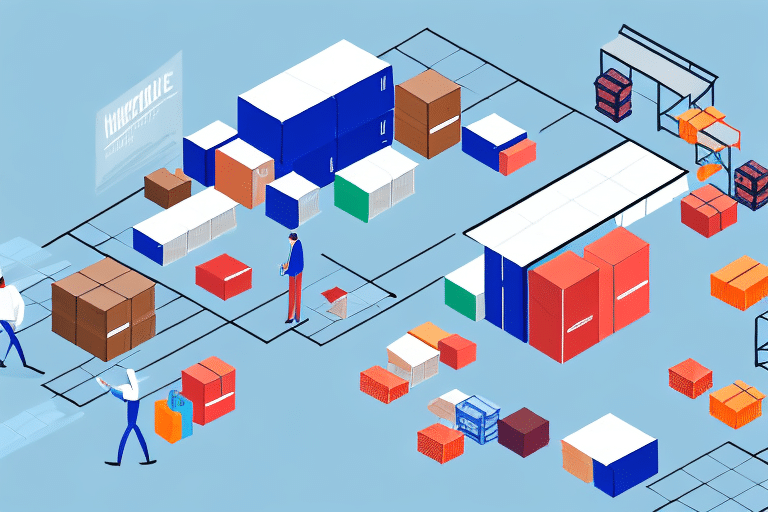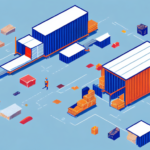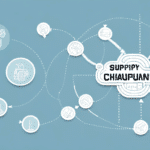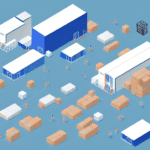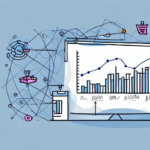Understanding Reverse Logistics
As businesses evolve to meet changing customer demands and dynamic market conditions, reverse logistics has become increasingly critical. But what exactly is reverse logistics, and why is it essential for business success? In this article, we explore the definition of reverse logistics and everything you need to know to implement a successful reverse logistics strategy in your business.
Why Reverse Logistics is Important for Businesses
Reverse logistics refers to the process of managing the flow of products and materials from their point of consumption back to their point of origin for the purpose of recapturing value or proper disposal. This involves handling returns and exchanges, as well as managing end-of-life products and materials responsibly. The importance of reverse logistics lies in several key areas:
- Value Recapture: Businesses can refurbish or resell returned products, reducing waste and increasing profitability.
- Customer Satisfaction: Offering hassle-free returns and exchanges improves customer loyalty.
- Environmental Compliance: Effective reverse logistics helps in complying with environmental regulations and reducing carbon footprints.
- Process Improvement: Analyzing return reasons can identify areas for improvement in product design, quality control, and customer service.
- Inventory Management: Tracking products through reverse logistics provides insights into inventory levels, demand patterns, and supply chain efficiency.
The Evolution of Reverse Logistics: A Brief History
The concept of reverse logistics is not novel; businesses have managed product returns for centuries. However, with the rise of e-commerce and increasingly complex supply chains, the importance of reverse logistics has significantly grown.
The Electronics Industry
The electronics industry was an early adopter of reverse logistics due to the complexity and rapid obsolescence of products. Efficient processes for handling returns and end-of-life electronics are essential for sustainability and profitability.
The Food Industry
The food industry has seen an increase in reverse logistics due to the rise of online grocery shopping and meal kit delivery services. Managing returns and reducing food waste require specialized reverse logistics processes.
Sustainability and Environmental Impact
Companies are increasingly focusing on sustainability by implementing reverse logistics to reduce waste and recycle or reuse materials. According to a US EPA report, effective reverse logistics can significantly lower environmental impact.
Key Differences Between Forward and Reverse Logistics
Understanding how reverse logistics differs from forward logistics is essential for implementing effective strategies.
- Flow Direction: Forward logistics involves moving products from origin to consumption, while reverse logistics manages the return flow.
- Complexity: Reverse logistics often involves multiple paths, destinations, and higher complexity due to varied return reasons.
- Customer Interaction: Reverse logistics typically requires more customer interaction to handle returns and exchanges.
- Technology: Advanced technology is often critical in reverse logistics for tracking and managing returns efficiently.
The Benefits of Implementing a Reverse Logistics Strategy
Implementing a reverse logistics strategy offers several advantages:
- Enhanced Customer Satisfaction: Easy returns increase customer trust and loyalty.
- Increased Profitability: Refurbishing and reselling returned products can generate additional revenue.
- Environmental Responsibility: Proper disposal and recycling reduce environmental impact and align with corporate social responsibility goals.
- Process Optimization: Insights from reverse logistics can lead to better product design and reduced return rates.
- Data-Driven Decisions: Analyzing return data helps in understanding customer behavior and improving overall business strategies.
How to Identify Opportunities for Reverse Logistics in Your Business
Identifying opportunities for reverse logistics involves analyzing your current supply chain and understanding customer needs.
- Supply Chain Analysis: Assess areas where reverse logistics can add value, such as returns management, recycling, or refurbishing.
- Customer Preferences: Understand customer expectations regarding returns and sustainability to tailor your reverse logistics strategy.
Best Practices for Managing a Successful Reverse Logistics Program
Implementing a successful reverse logistics program requires strategic planning and execution:
- Streamline Processes: Use automated systems or third-party providers to enhance efficiency.
- Clear Communication: Ensure customers understand return policies and communicate promptly during the return process.
- Performance Monitoring: Regularly review processes and metrics to identify improvements.
- Technology Investment: Implement RFID tracking, inventory management software, or data analytics to enhance reverse logistics operations.
Common Challenges in Implementing Reverse Logistics and How to Overcome Them
Implementing reverse logistics can present challenges, such as:
- Cost: Reverse logistics can be costly. Mitigate costs by optimizing processes or partnering with third-party providers.
- Complexity: Simplify processes and improve visibility through technology to handle the complexity of reverse flows.
- Customer Expectations: Meet high customer expectations by providing fair return policies and excellent communication.
The Role of Technology in Streamlining Reverse Logistics Processes
Technology plays a critical role in enhancing reverse logistics:
- RFID Tracking: Enhances visibility and management of returned products.
- Inventory Management Software: Optimizes reverse logistics processes and reduces operational costs.
- Data Analytics: Provides insights into return patterns and informs strategy improvements.
Case Studies: Real-World Examples of Successful Reverse Logistics Programs
Several businesses have effectively implemented reverse logistics programs:
Best Buy
Best Buy has a robust reverse logistics program that includes recycling electronic waste and repurposing returned products for donation to non-profits.
Nordstrom
Nordstrom offers prepaid return labels and in-store return options, improving customer satisfaction and loyalty.
Future Trends in Reverse Logistics
The reverse logistics landscape continues to evolve, with several emerging trends:
- Artificial Intelligence and Machine Learning: Enhancing the management and efficiency of reverse logistics processes.
- Sustainability Focus: Increasing emphasis on reducing waste and improving materials recycling.
- E-commerce Growth: Driving demand for efficient and customer-friendly reverse logistics strategies.
Conclusion: The Crucial Role of Reverse Logistics in Business Success
Reverse logistics is a vital component of modern business, offering opportunities to enhance customer satisfaction, recapture value from returns, and demonstrate corporate social responsibility. By understanding the key concepts and best practices of reverse logistics, businesses can optimize their strategies and stay competitive in a rapidly changing market.















